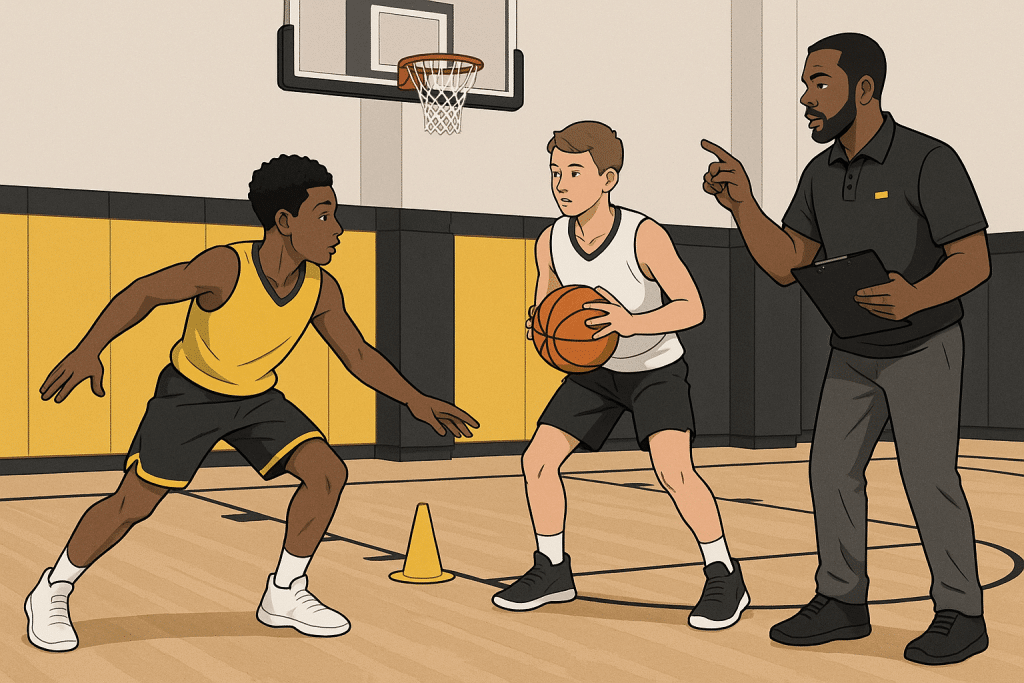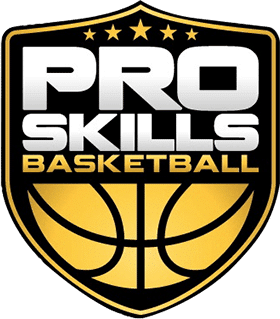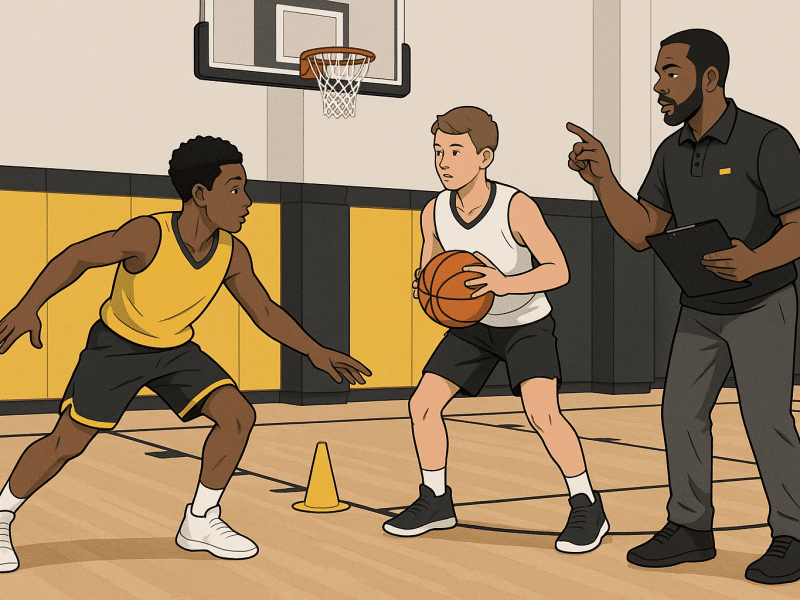
Footwork Pivot Basketball Drill Pt. 2 – Mastering the Reverse Pivot
In the first edition of our Basketball Drill of the Month series, we introduced the foundational Footwork-Pivot-Line Drill, focusing primarily on the forward pivot. Now in Part 2, we’re diving into a skill that’s often overlooked but absolutely critical for youth basketball players—the reverse pivot.
While the forward pivot is relatively easy for most players to grasp, the reverse pivot presents a unique challenge—even for high school athletes. At Pro Skills Basketball, we’ve seen firsthand how mastering this move can set a player apart in both footwork and court awareness.
This drill continues to build on the importance of fundamental footwork, balance, and decision-making. It also adds complexity by combining pivoting with passing variations, reinforcing basketball IQ in dynamic situations.
Drill Setup: How It Works
To execute the Footwork-Pivot-Line Drill, follow these simple steps:
Step 1: Baseline Starting Position
Players line up along the baseline and on the free throw lane line, facing the elbow of the court.
Step 2: Controlled Dribble & Jump Stop
Players dribble up to the elbow using their outside hand (right hand on the right side, left hand on the left side), then perform a jump stop into triple threat position.
Step 3: Pivot Assignment
Before the drill begins, the coach calls out the pivot type:
-
Left Foot Forward Pivot
-
Right Foot Forward Pivot
-
Left Foot Reverse Pivot
-
Right Foot Reverse Pivot
Players then execute the instructed pivot at the elbow, ensuring correct foot placement and body control.
Step 4: Passing Assignment
After the pivot, players must complete a pass. The coach assigns the type before the drill begins:
-
Two-Hand Chest Pass
-
Two-Hand Bounce Pass
-
One-Hand Side Chest Pass
-
One-Hand Side Bounce Pass
Players make the designated pass to a partner or coach after the pivot, emphasizing accuracy and proper technique.
Why the Reverse Pivot Is So Challenging
The reverse pivot is harder because it requires:
-
Great balance
-
Precise footwork
-
Spatial awareness
-
Body control under pressure
Unlike the forward pivot where players naturally open up to the court, the reverse pivot requires players to rotate away from the defender while maintaining their pivot foot, which can be disorienting if they’re not practiced.
In the video from Part 2, you’ll notice players struggle more as the drill progresses—especially when layered with the additional passing instruction. That’s okay. This is part of the learning process.
Common Mistakes (and How to Fix Them)
After running this drill across multiple PSB practices and clinics, here are the most common mistakes we see:
1. Dribbling with the Wrong Hand
Players often dribble with their inside hand rather than their outside hand. Reinforce correct mechanics early to build good habits.
Fix: Drill the concept of “outside hand only” in warm-ups or breakdown drills before executing this one.
2. Rushing the Jump Stop & Pivot
Going too fast can lead to poor balance or even traveling violations.
Fix: Emphasize “slow feet, smart mind”. Slowing the game down mentally helps players execute cleaner movements.
3. Incorrect Pivot Foot
Some players lift the wrong foot or change their pivot foot mid-move.
Fix: Use cones or floor markers to visually show where the pivot foot should be planted.
4. Poor Passing Execution
Whether it’s a weak pass, wrong type of pass, or poor aim, mistakes often happen here when players are mentally fatigued or unfocused.
Fix: Isolate passing as a separate warm-up drill before layering it into the full sequence.
Coaching Tips for Success
-
Repetition is key. Allow players to walk through the drill slowly before ramping up intensity.
-
Use video breakdown. Show footage of both correct and incorrect executions.
-
Add accountability. Have players give each other feedback or self-assess their pivot and pass.
-
Celebrate progress. Even small improvements in footwork or passing deserve praise.
What’s Next? Make It a Competition!
Now that players have the fundamentals of forward and reverse pivots along with a variety of passes, it’s time to turn up the intensity. In our next Drill of the Month, we’ll show you how to make this pivot and pass drill into a fun competitive game. Adding a competitive element keeps players focused, improves engagement, and simulates game pressure situations.
Why Footwork Drills Matter in Youth Basketball
At PSB, we constantly preach that player development starts with the fundamentals. Before kids chase rankings or try to play “positionless basketball,” they must master the basics of:
-
Footwork
-
Pivoting
-
Passing under pressure
-
Decision making
This drill, especially with the reverse pivot included, checks all those boxes.
Whether your child is a beginner or trying to earn more playing time at the high school level, drills like this one build real, long-term skills.
Ready to take the next step in your child’s basketball journey?
Pro Skills Basketball offers Club Teams, Camps, Clinics, and Academies in 25+ cities across the U.S.
👉 Find your city and sign up today to join a program focused on real development, experienced coaches, and a culture that puts players first.
📩 Contact us at admin@proskillsbasketball.com
📞 Call us at 866-996-3888



